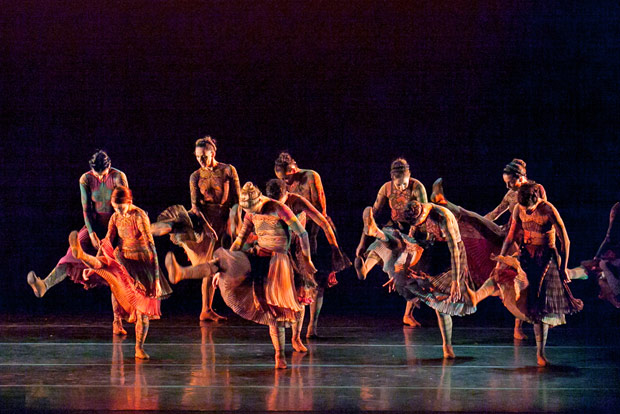
© Sharen Bradford. (Click image for larger version)
IBERIAN SUITE: global arts remix
Kennedy Center Festival – details
www.kennedy-center.org
Grupo Corpo
Sem Mim, Onqotô
6 March 2015
www.grupocorpo.com.br
Companhia Portuguesa de Bailado Contemporâneo
Fado, Rituals and Shadows
10 March 2015
www.cpbc.pt
In March, the Kennedy Center for the Performing Arts is presenting IBERIAN SUITE: global arts remix – a celebration of the cultures and influences of the Spanish- and Portuguese-speaking countries. This vibrant three-week festival offers dozens of performances by some of the world’s leading contemporary music, theater and dance artists and features numerous exhibitions of art, design and fashion, taking Washington audiences into to the heart of the region’s diverse cultural heritage.
The Brazilian dance company, Grupo Corpo, opened the dance component of the Iberian Suite showcase with two contemporary works, Sem Mim (2011) and Onqotô (2005), both created for the company by its resident choreographer, Rodrigo Pederneiras.
Grupo Corpo (“Group Body”) boasts a 40-year history. It was founded in 1975 by Paulo Pederneiras as a family enterprise; at one point 5 brothers and sisters of the Pederneiras clan were dancers of the company. Rodrigo, after retiring from dancing in 1981, became Grupo Corpo’s full-time choreographer; and Paulo, in addition to his duties as general and artistic director, designs scenery and lighting for the troupe’s numerous productions.
An extensively-touring company, Grupo Corpo combines traditional ballet technique with a contemporary remake of popular Brazilian dances and is recognized around the globe for its unique movement style. This is a group of talented, impeccably-rehearsed dancers, justly celebrated for their athleticism and impressive dancing prowess.
The program’s opening work, Sem Mim (“Without Me”), is a poetic exploration of love and nature. This dance was inspired by a collection of seven lyrical songs dating from the 13th century, “Sea of Vigo” by Martín Codax, set to a commissioned score by Carlos Núñez and José Miguel Wisnik. The songs’ lyrics convey the sorrow and plight of women who await the return of their beloved from the sea. Diverse in its rhythmical and melodic coloring and structure, the evocative music gives the impression of rolling waves: now gentle and slow, now powerful and fierce.
Sem Mim is a large ensemble piece. In the beginning, the cast, clad in skin-colored unitards with tattoo-like drawings, evokes a tribe of medieval fishermen. Fluidly moving in and out of step, they travel about the stage as one body, their hips swaying and torsos flowing in hypnotic unison. At times, accentuating the cascading pulse of the soundtrack, the dancers incessantly jump and spin as if being caught up in a flurry of rippling currents.
A sense of tight-knit community was established from the start. The dancers’ sinuous yet spirited hip and shoulder movements gave an overall impression of physical energy and oceanic fluidity, while their angular bending of knees and the deep arching of backs illustrated their engagement with earthy life.
Yet although the choreography beautifully highlighted the virtuosic technical skills and marvelously-sculptured bodies of the dancers, there was little variation of steps and ideas on display as the piece rolled forward, and neither momentum nor dramatic tension was ever built. The action onstage gradually slipped into monotony; and after a while, the dancing itself looked too repetitive to produce any drama or excitement.
One of the most memorable moments of Sem Mim came in the first part of the piece, when a huge expanse of shimmering fabric descended from the ceiling, creating onstage a tent-like structure to shroud a sensual, flowing pas de deux. Another highlight was a spritely Celtic jig. It brought onstage the entire cast wearing kilt-like skirts and stomping the floor with a Riverdance passion.
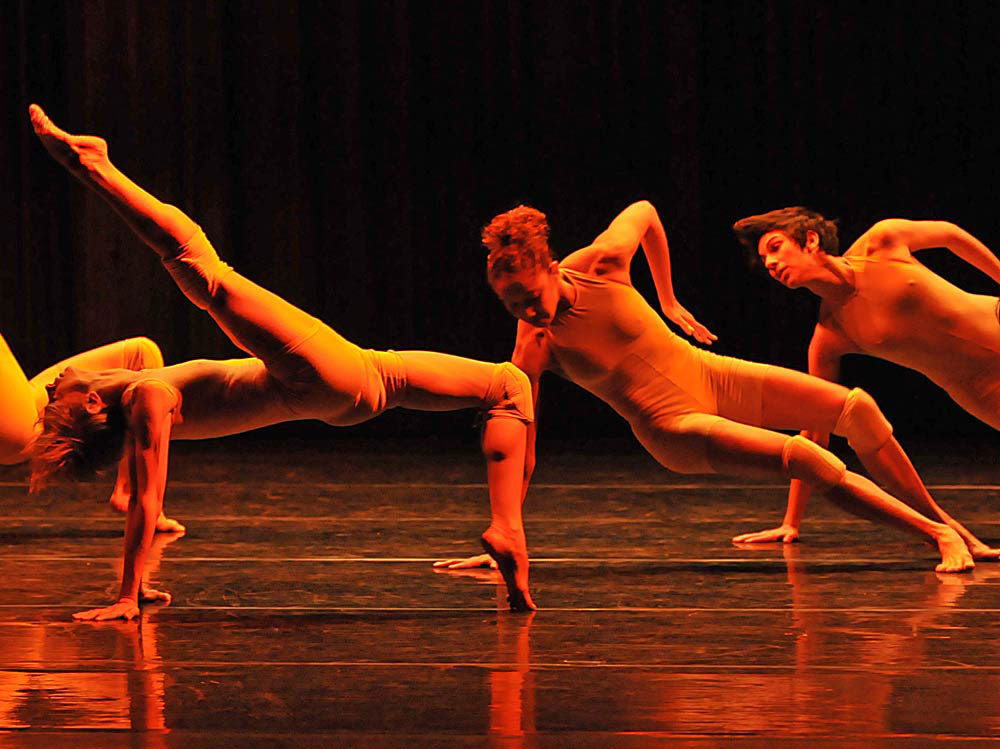
© Dave Morgan. (Click image for larger version)
The second piece of the evening, Onqotô (“Where am I?”), similar to the opening number, was dominated by ensemble dancing. It began with a cluster of dancers in red costumes swaying their bodies to the throbbing sounds of a techno soundtrack. As the music became faster, a dark-clad group scattered onstage in what looked like an exuberant tap extravaganza, with the dancers’ feet producing a cacophony of brilliant rhythmic sounds in response to the ferocious beat of the percussion-heavy score. There was a sense of mesmerizing physical thrill in Grupo Corpo’s precise and invigorating footwork. The effective stage designs – an arch-like curtain of dark long rubber strips – allowed the dancers to suddenly appear on the stage or disappear into the void.
Amid the whirlpool of mass action, there were two pas de deux danced side-by-side and a brief male solo. In the duets, one couple (a man and a woman) expressed their love as a violent torrent; the other (two women) as a refuge and solace. These numbers offered a rare glimpse of the individuality and personal strength of the company’s dancers, yet none of them revealed emotional depth or had logical connection to the rest of the work.
Nautical themes were explored further in a fado-inspired program, Fado, Rituals and Shadows, presented by Lisbon’s Companhia Portuguesa de Bailado Contemporâneo.
The word “fado” means fate, destiny, and despair. Accompanied by a guitar and imbued with intricate, languorous rhythms, the fado songs are always wistful, somber and sentimental, usually about lost love, broken illusions, unfulfilled hopes. It’s said that fado was born from the songs of 18th-century Portuguese sailors, homesick for their homeland as they searched the seas for wealth and fortune thousands miles away.
“If a seagull came/To bring me the Lisbon sky/The line of its flight, bright/Gaze on a wing of might/ Surrenders the power to fly/Diving down to the sea.”
Choreographed by the company’s artistic director, Vasco Wellenkamp, and set to love songs by two renowned fado singers, Amália Rodrigues and Carla Pires, Fado, Rituals and Shadows brings the audience inside a dimly-lit, smoky Lisbon nightclub and unfolds as a suite of short dances, each packed with a hefty dose of fatalism and melodrama.
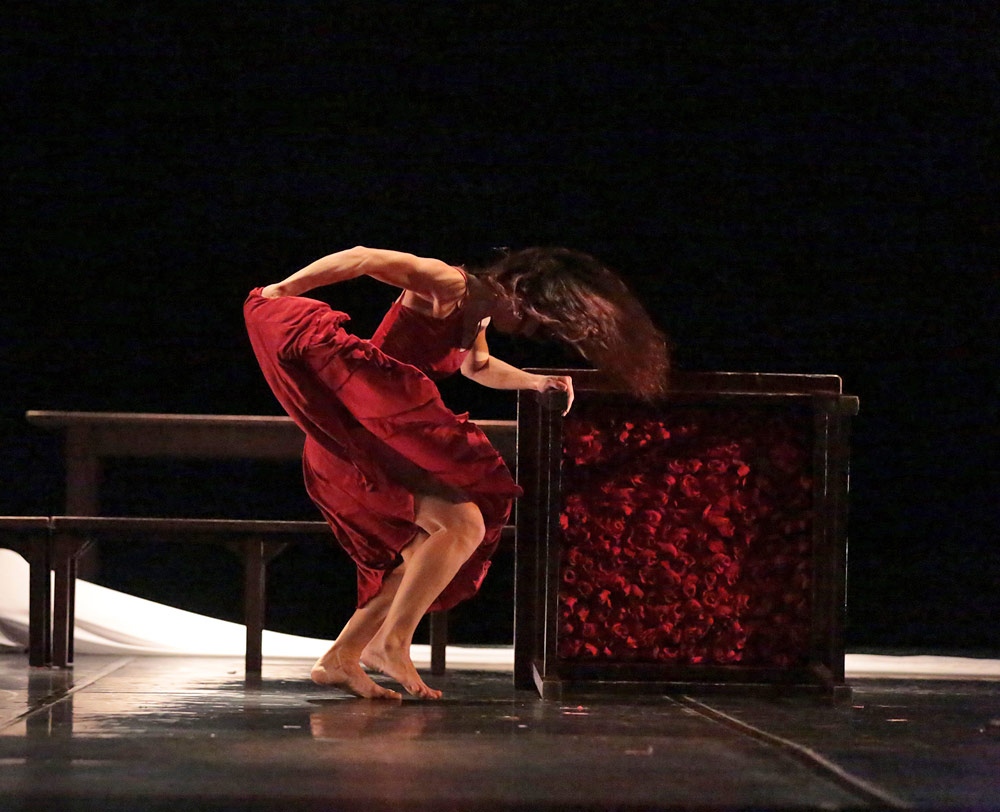
© Antonio Cabrita. (Click image for larger version)
Wellenkamp’s choreography mixes the classical ballet vocabulary with modern and social-dance forms and takes the sense of sorrow and desperation inherent in fado to the extreme. In Fado, Rituals and Shadows, the dancers launched themselves wildly into the air, warped their bodies forcefully and flung their gorgeous limbs with breathtaking facility and abandon. Looking tragic and overwrought, the beautiful women, in attractive flowing dresses, tossed their hair and lunged to the floor with spectacular madness.
The stage design was simple and spare: a wooden table and a few chairs and benches. In the course of the work the dancers moved and rearranged the furniture to frame their dancing. At times they sat on the chairs and watched their companions take turns on the dance floor. In one scene the table was turned on its side to create a cage-like structure for a sinuous solo in which a female dancer frenziedly curved and twisted her body as if trying to escape from her cramped tenement.
With the atmosphere ranging from anguish to despair, it all felt like one long exhausting crescendo; and, lacking creative invention and a coherent story line, the dance inevitably turned into an unremarkable, physically strenuous exercise. (The entire work lasted one hour and 15 minutes with no intermission.)
Yet I was so impressed by how much dedication and hard work the excellent cast put into their spirited performance, and how spacious and free of inhibition their movement style looked. Their dancing was irresistible in its energy and fervor and, together with the gorgeous vocals of the soundtrack, proved the highest point of the evening.








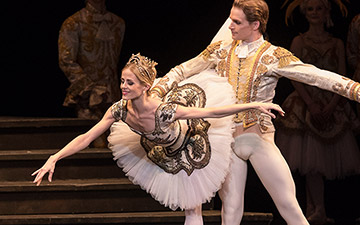




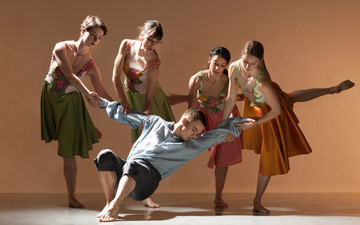
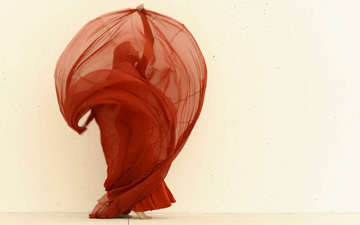
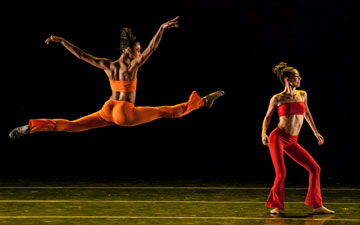
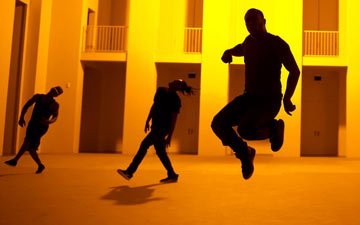
You must be logged in to post a comment.